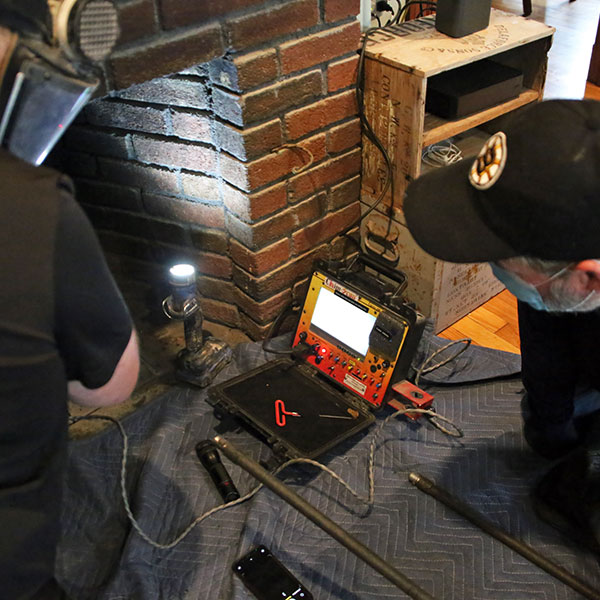Is Your Fireplace & Chimney Safe?
Fireplaces and chimneys that are damaged or malfunctioning usually leave certain clues. Other clues don’t point to existing damage but rather damage that may occur soon if the clues are neglected.
Keeping your fireplace and chimney safe starts with performing periodic visual inspections, followed by fixing what you can and then bringing in a professional chimney technician to take care of the rest.
Signs your fireplace needs attention
 Firebox damage
Firebox damage
Clean out the firebox and look closely inside it. Do you see any compromised areas or cracked/broken sections? Are any of the bricks chipped or crumbling? Is the mortar falling away from between the bricks?
Structural damage to a fireplace can lead to flames coming into contact with flammable home building materials and starting a house fire. If any area of your firebox looks odd or abnormal, have a chimney inspector take a closer look.
Quality of flames
Burning logs should produce clear, vibrant flames. They should efficiently burn fully and produce only a reasonable amount of smoke. The flames in gas fireplaces should be bluish and consistent, never sputtering or with a stop and start type of pattern.
Sluggish burning of wood logs could mean the logs are damp, the firebox is over-full, the house is too air-tight to create a draft or there’s a drafting obstruction in the chimney flue (see below). Issues with gas combustion can be caused by damaged fuel lines or problems with the burner or other components. Have any of the above issues you can’t handle inspected by a chimney technician.
Signs your chimney needs attention
More problems happen with chimneys than with fireplaces. Here’s what to look for.
Water in the firebox
This means water is getting into the system, possibly through a damaged (or missing) chimney cap, deteriorated flashing, or serious masonry damage.
Damp patches on walls and ceiling
This also indicates a leak, which could be coming through the chimney or the roof.
Black soot and smoke stains
Watch for these stains around the top of the exterior chimney. Excess smoke often is a sign of a previous chimney fire – or many fires over time.
Component damage
Along with the chimney cap at the top of your chimney, visually inspect the concrete chimney crown below the cap, the flashing that seals the gap between the chimney and the roof, and the bricks and mortar within the masonry. If anything looks damaged, broken or unusual, report it to a professional.
Flue obstructions
You may not be able to see down into your flue to spot obstructions, but you can notice some of the signs of an obstructed flue including smoke backups and fires that burn sluggishly and are hard to start and keep going. Common obstructions include tree debris and the nesting material of birds, squirrels and other small animals or even animals that have died in the chimney.
 Why you need an annual chimney inspection
Why you need an annual chimney inspection
While you can observe and remedy some problems with your fireplace and chimney, other problems need the knowledge and expertise of a qualified chimney professional.
Fire-safety agencies and hearth organizations throughout the U.S. recommend annual chimney inspections to spot early signs of chimney issues in order to resolve them quickly. A thorough wood/gas fireplace inspection also should be performed once a year.
Above & Beyond Chimney Service of Dedham, MA, serves South Boston and the entire South Shore area of Massachusetts with expert chimney and fireplace inspections, complete repairs for both systems and chimney cleaning done by experienced technicians.
For any fireplace or chimney issues, get the problem resolved by calling (781) 383-0415.
